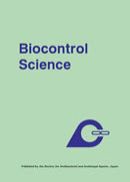Volume 3, Issue 1
Displaying 1-9 of 9 articles from this issue
- |<
- <
- 1
- >
- >|
-
1998 Volume 3 Issue 1 Pages 1-5
Published: March 20, 1998
Released on J-STAGE: February 23, 2011
Download PDF (1994K) -
1998 Volume 3 Issue 1 Pages 7-15
Published: March 20, 1998
Released on J-STAGE: June 28, 2010
Download PDF (1483K) -
1998 Volume 3 Issue 1 Pages 17-21
Published: March 20, 1998
Released on J-STAGE: June 28, 2010
Download PDF (733K) -
1998 Volume 3 Issue 1 Pages 23-29
Published: March 20, 1998
Released on J-STAGE: June 28, 2010
Download PDF (971K) -
1998 Volume 3 Issue 1 Pages 31-38
Published: March 20, 1998
Released on J-STAGE: June 28, 2010
Download PDF (2594K) -
1998 Volume 3 Issue 1 Pages 39-42
Published: March 20, 1998
Released on J-STAGE: June 28, 2010
Download PDF (622K) -
1998 Volume 3 Issue 1 Pages 43-46
Published: March 20, 1998
Released on J-STAGE: June 28, 2010
Download PDF (561K) -
1998 Volume 3 Issue 1 Pages 47-49
Published: March 20, 1998
Released on J-STAGE: June 28, 2010
Download PDF (415K) -
1998 Volume 3 Issue 1 Pages 51-55
Published: March 20, 1998
Released on J-STAGE: June 28, 2010
Download PDF (2475K)
- |<
- <
- 1
- >
- >|
